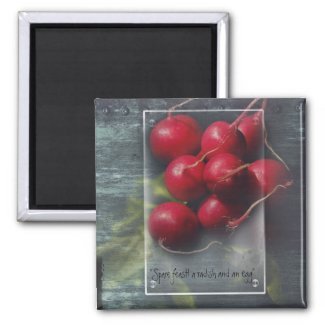Wednesday, June 30, 2010
Tuesday, June 29, 2010
Sound familiar?
Sound familiar? How about this…“If you photograph our event for free, we will consider you for upcoming events.” What you now have to decide is if working for free will actually pay off. You want to break into the photography industry but the last time you checked, working for free doesn’t pay bills or put food on the table. In situations like this it is usually the photographer who gets the short end of the stick. Consider this as a reason why. The photography industry is saturated to the point you can wring it out and fill buckets! Companies know this and know there are plenty of people willing to work for free in hopes of getting their foot (and lens) in the door.
Here’s a few ideas to ensure both you and the organization come out as winners. I should also mention that dealing with non-profit organizations create some gray areas. Non-profits by nature rely on donations of time, money, and talent. You’ll need to judge each situation as it comes, but #3 below provides some guidance.
1. With companies, always make a trade. NEVER work solely for free. It cheapens you as a business and brings down the entire photography industry. If a company isn’t willing to pay you now, more likely than not they won’t be willing to pay in the future.
2. Consider swapping photography services for marketing/sales opportunities. As an example, if the company is acknowledging sponsors of its event, make sure your info is listed as an in-kind sponsor with your name, website and type of service. Another example is including your marketing collateral (business postcard, promotional swag, etc.) in the company’s gift basket.
3. If you’re offering your services pro bono to your favorite non-profit, do not be afraid to ask for something in return. Here’s an example: let’s say you set-up a mini studio at a non-profit’s annual family picnic. You handle the photography for free and in return are allowed to sell the images. Some photographers even print a free 4×6 image on the spot with ordering details for larger sizes. Get creative and think out of the box. You may only spend a few minutes with the family but people are always more inclined to use someone they are familiar with for future photography needs.
4. Let’s say a local radio station is starting its summer concert series and you really want to get in on the events. Offer to shoot one event for free provided they are willing to book two additional events for pay. If they agree to an arrangement like this, get it in writing and make them sign it! Also state when you expect payment.
Have a number in your head of how many trade and free events (non-profits) you are willing to work during the year and stick to it. The last thing you want to do is overwhelm your schedule with unpaid events and become “that guy” who works for free. I realize that building a portfolio and gaining experience is a challenge, but do not sell yourself, your time, or your talent short.
There are as many ‘for trade’ possibilities as there are stars in the sky. Again, get creative! If you have a great idea to share with other photographers, please post it in the comments section below.
Sunday, June 27, 2010
Visualizing
Making your description interesting is largely about creating clear and occasionally striking images for the reader to visualise.
Description With Emotion
What really gives your description depth is relating how it makes your characters feel, showing their emotional response through the words and images you choose. Good description layers in emotions, almost giving what is being described a personality.
“The skerry was resting in the sea. It was like being in a cradle, or on a deathbed, he thought. All the voices hidden in the cliff were whispering. Even rocks have memories, as do waves and breakers. And down below, in the darkness where fish swam along invisible and silent channels, there were also memories”. Henning Mankell (Depths: A Novel)
The character’s emotions and mood are projected onto the landscape here, showing his age, solitude and loneliness. The comparison of the boat to a cradle and deathbed is complex, showing the narrator to be looking both forward and back in his life and comparing old age to infancy.
Five Senses
It is easy to focus on the visual when describing a place, carefully detailing the colours and shapes of things. Don’t forget our other senses: taste, touch, smell, and sound. Working these into your setting descriptions adds colour and texture, allowing the reader to imagine themselves in the scene and really bringing an experience of place onto the page rather than just a cool photographic distance.
Spending a little time to nail that perfect word or image can really pay off with your description. Keep it brief, keep it relevant, work it into your story and the reader won’t be able to skip it.
Saturday, June 26, 2010
How to take a better portrait shot for your business or Social Media
With social media on the rise these days and business competition being fierce, you need to have a winning bio shot for your business. Below you will find a few tips to help your photo shoot go better.
1. Get lots of rest the night before.
2. Avoid sugar, alcohol and carbs the night before, they make you bloat.
3. Stay away from busy patterns around your face
4. Women don't over do the makeup, blend, blend, blend and if you are not a pro with your makeup skills, hire a makeup artist.
5. Remove any unwanted facial hair - today's cameras shoot in such high definition that you see every detail.
6. Whiten your teeth if they need some brightening and drops for the eyes.
7. Wear flattering colors, men if you have blue eyes then a blue shirt will make them pop and look amazing.
8. Relax, think of something that makes you happy while shooting - family, favorite pet, etc. Don't worry if there are a few bad shots in the bunch....that is why they have the delete button.
9. Update your photo from time to time so it does not become outdated.
Embrace your flaws, they add character and are a part of you. It is not realistic to expect to look 20 again and photographers are not plastic surgeons. While some work can be done for slight improvements in photoshop it is best to look like yourself. I have heard more than one person tell me they would not trust a person if they looked 25 in their photo and reality they were in their 50s.
Have a great shoot!
Dania Reichmuth
Nature & Portrait Photography
Member: Photo Suisse
Your Passion
would you like to know how to decide what area of photography to focus your career on.
Everyone is really spot on when they encourage you to find your passion. What excites you the most? What are your strengths as a photographer? What aspect do you find yourself avoiding? Are you comfortable and good with people? Do you enjoy complex, detailed shoots, or do like more flexible open situations? These questions should help you get to the internal aspects (self awareness) of your selection. Obviously, you need to explore the external aspects - what is out there that catches your attention and allows you to express yourself in the way that you want? Test the various options so you can experience them and not just decide based upon what you think something will be like.
Everyone has a career path that typically is filled with exploration. As you explore, pay attention to what excites you the most. Do you have a natural talent for something? Watch for opportunities to meet other photographers, and continue to ask questions.




